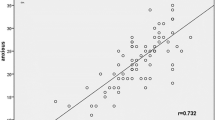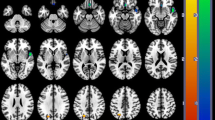Abstract.
Depression is one of the most common psychiatric illnesses. Its influence on brain perfusion has been demonstrated, but conflicting data exist on follow-up after drug treatment. The aim of our study was to evaluate the effects of antidepressant drugs on regional cerebral blood flow (rCBF) in patients with depression after 3 weeks and 6 months of drug therapy. Clinical criteria for depression without psychosis were met according to psychiatric evaluation. Severity of depression was evaluated with the Hamilton Depression Rating Scale (HAMD) before every scintigraphic study. rCBF was assessed using technetium-99m bicisate (Neurolite) brain single-photon emission tomography in nine patients with severe depression before the beginning of antidepressant drug therapy and 3 weeks and six months after initiation of therapy. Only patients with no change in antidepressant medication during the study were included. No antipsychotic drugs were used. Cerebellum was used as the reference region. rCBF was evaluated for eight regions in each study in three consecutive transversal slices. Follow-up studies were compared with the baseline study. The mean HAMD score was 25.5 points initially, 16 at the second examination and 8.8 after 6 months. Global CBF was decreased compared with the reference region in drug-free patients. Perfusion of left frontal and temporal regions was significantly lower (P<0.005) in comparison with the contralateral side. After therapy, a moderate decrease in perfusion was seen in the right frontal region (P<0.05). Perfusion decreased further after 6 months in the right frontal (P<0.005) and temporal regions (P<0.01). The highly significant asymmetry in perfusion between the left and right frontal and temporal lobes almost disappeared during treatment. Our findings implicate dysfunction of the frontal and temporal cortex in clinically depressed patients before specific drug treatment. Clinical improvement and decreases in HAMD score after 3 weeks and after 6 months reflect the treatment effect on mood-related rCBF changes.
Similar content being viewed by others
Author information
Authors and Affiliations
Additional information
Received 1 May and in revised form 24 June 1998
Rights and permissions
About this article
Cite this article
Kocmur, M., Milčinski, M. & Budihna, N. Evaluation of brain perfusion with technetium-99m bicisate single-photon emission tomography in patients with depressive disorder before and after drug treatment. Eur J Nucl Med 25, 1412–1414 (1998). https://doi.org/10.1007/s002590050316
Issue Date:
DOI: https://doi.org/10.1007/s002590050316




